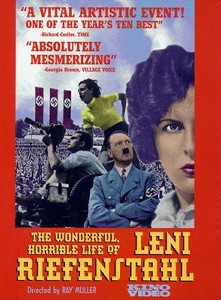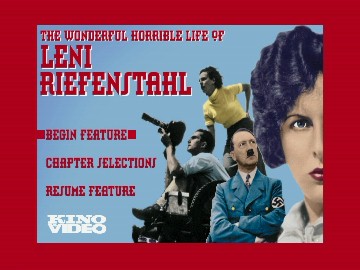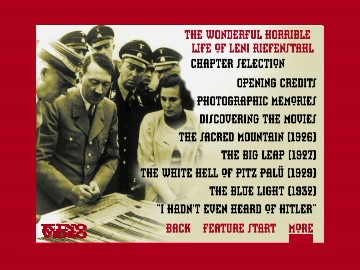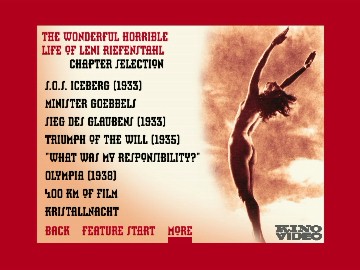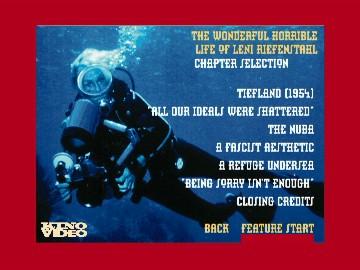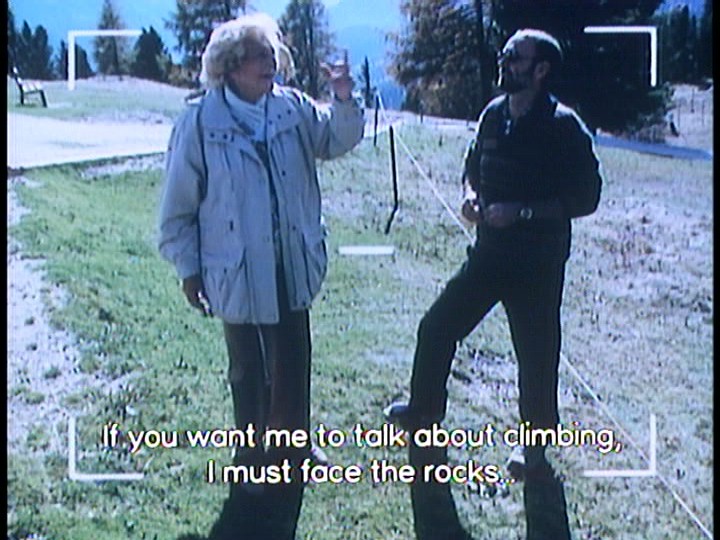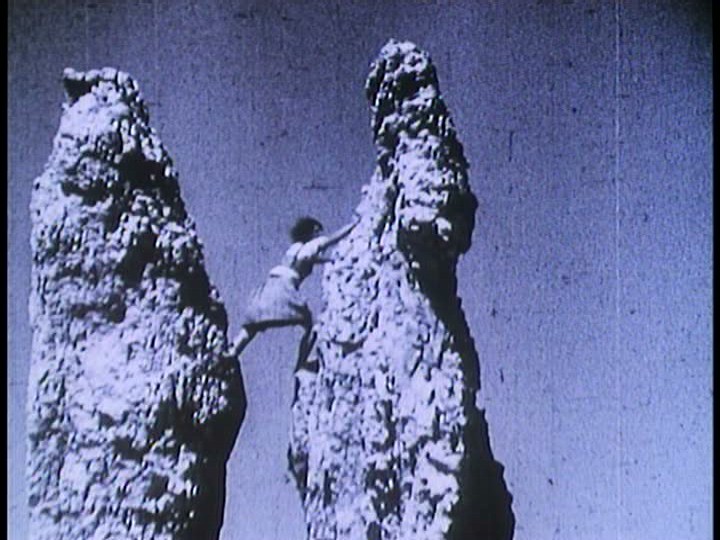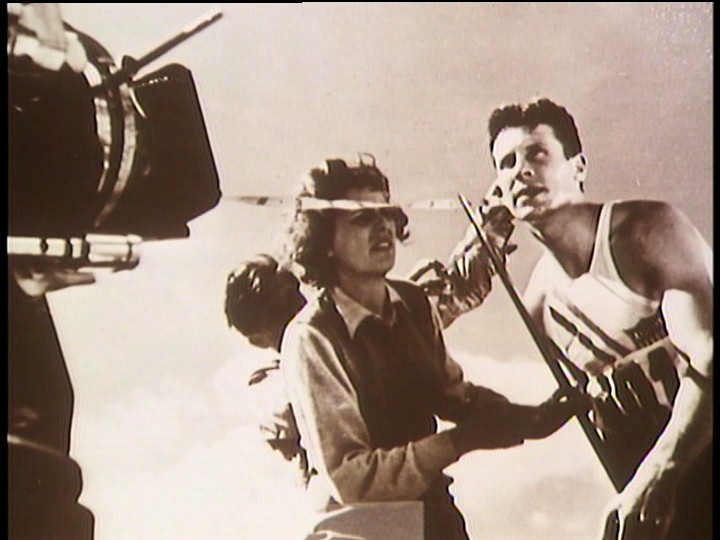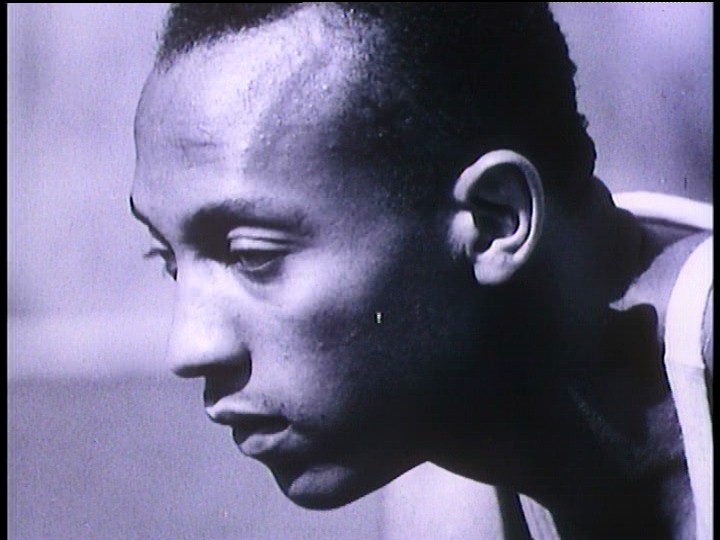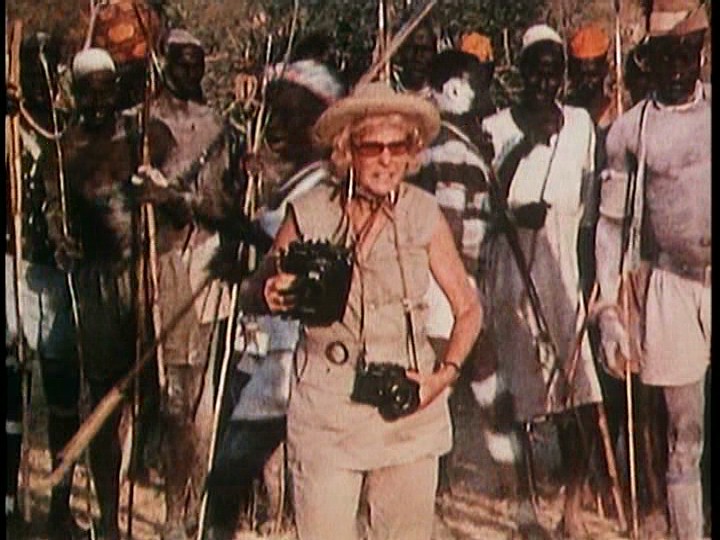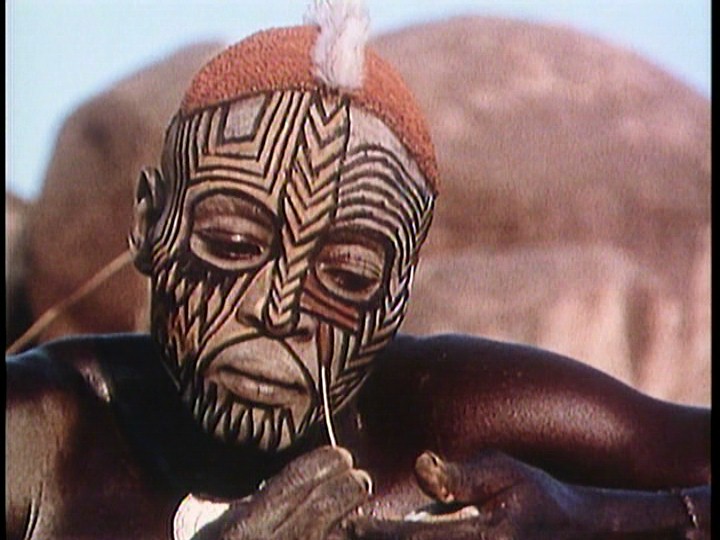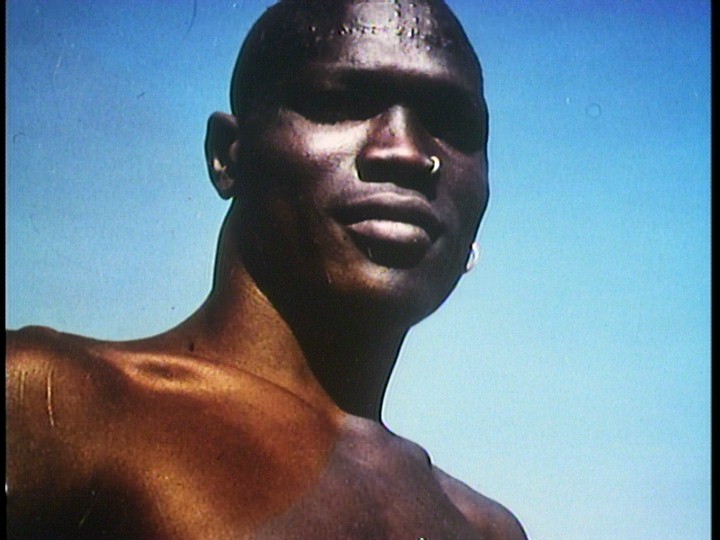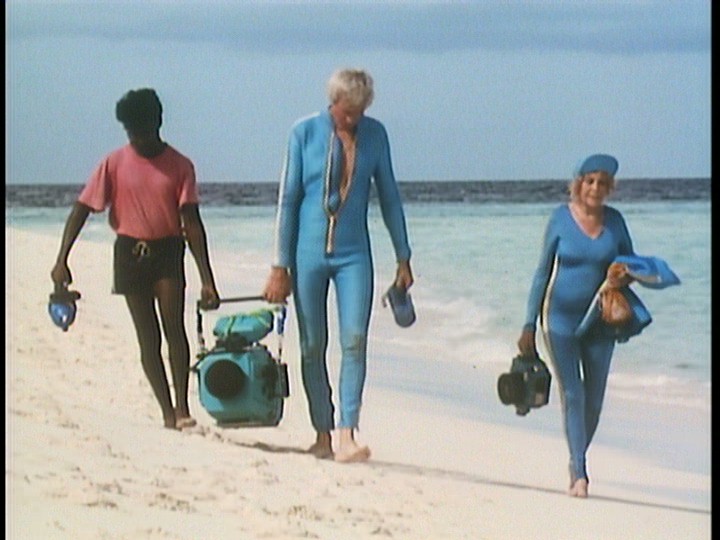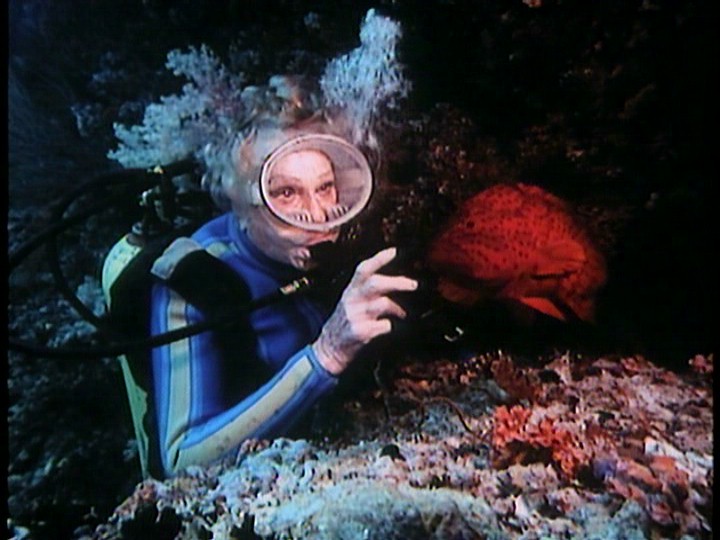![]()

![]()
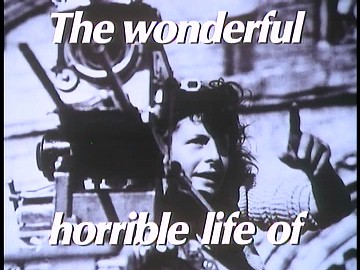
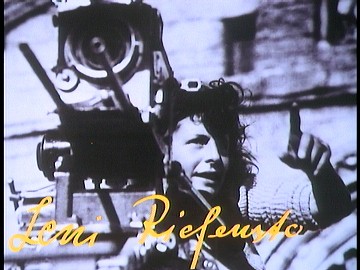
(aka "Die Macht der Bilder: Leni Riefenstahl" or "The Power of the Image: Leni Riefenstahl")
directed
by Ray Muller
Germany 1993
This movie is fascinating in so many different ways: As the story of an extraordinary life, as the reconstruction of the career of one of the greatest of film artists, as the record of an ideological debate, as a portrait of an amazing old woman. At its heart is the question of the soul and purpose of art. Can art be detached from its context? The pyramids were constructed at the cost of the lives of uncounted thousands of slaves. Do we remember them today? Do their deaths diminish the monuments they built? One dilemma of Leni Riefenstahl's wonderful, horrible life is that it has been so long. It would be so much easier to simply study the films without still having to deal with the unrepentant woman.
Posters
 |
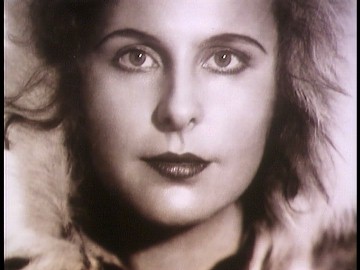 |
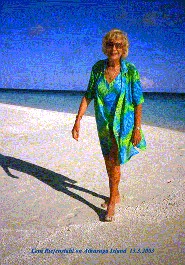 |
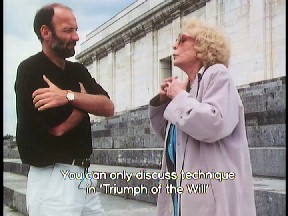 |
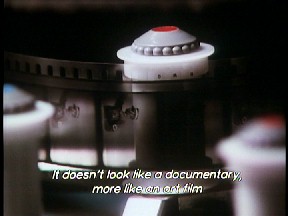 |
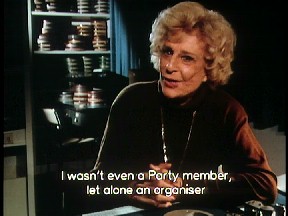 |
Theatrical Release: Aug. 22, 1902 - Sept 8, 2003
Reviews More Reviews DVD Reviews
DVD Review: Kino Video - Region 0 - NTSC
Big thanks to Enrique B Chamorro for the Review!
| DVD Box Cover |
|
CLICK to order from:
|
| Distribution |
Kino Video Region 0 - NTSC |
|
| Runtime | 3:08:18 | |
| Video |
1.33:1
Original Aspect Ratio |
|
|
NOTE: The Vertical axis represents the bits transferred per second. The Horizontal is the time in minutes. |
||
| Bitrate |
|
|
| Audio | English and German DD 2.0 | |
| Subtitles | English over German dialog | |
| Features |
Release Information: Studio: Kino Video Aspect Ratio:
Edition Details: Chapters 23 |
|
| Comments |
The US Kino DVD is a straight
forward transfer of Muller's 1993 documentary. The transfer is clear and
the sound is balanced. There are no extras, but the content of the film
will leave the viewers plenty of issues to discuss. Muller's film may run over 3 hours but the time flies by. It opens with juxtaposed footage of Leni scuba diving at age 90 and clips from her most famous film "Triumph of the Will". All her work, all her life will be in the shadows of the Nazi Nuremberg rally films. Muller covers the required childhood years and Leni's early years as a dancer. Her entry into movies via the mountain adventure films give the viewer a window into Leni's personality. She retells the account of her first meeting with Luis Trenker (the star of Mountain of Destiny 1925), "I am going to act with you in your next film." He laughed and retorted "And mountain climbing? You can't climb? Such a young lady as you has no business being in the mountains." She was steadfast, "I want to learn and I believe that I can do anything that I set my heart on." It was this ambition that drove her for her whole life. Muller provides enough detail about her staring in 5 adventure films and then directing herself in her own mountain adventure film The Blue Light, 1932. Even while Ray Muller is interviewing her against the backdrop of a huge mountain rage, Leni sense of control asserts itself and she starts telling him how to block and light the interviews. Muller's documentary moves on to cover the Nuremburg rallies. Leni has had years of practice in defending her rally films, so Ray Muller allows her time to present her case. One of the most telling moments is when you see Leni closely watch a monitor showing a clip with the thousands of marching troops in The Triumph of the Will. She is lost in the moment, all she can comment on is the symmetry of the columns of men branching off to the left and the right, she is still (perhaps willfully) blind to the underlining horror being displayed. Several excerpts are given from her set of films coving the 1936 Olympics called Olympia along with a visit to the old stadium with some of the cameramen who are still alive. (Criterion issued the film as a laserdisc and in is currently available on DVD in Germany, it would be a wonderful opportunity if Criterion could issue her Olympic vision just as they have with the 1964 Tokyo Olympiad.) Plenty of detail is given on the innovative techniques used in making Olympia, but much of the propaganda that was part of the films is minimized by Riefenstahl. The documentary moves on to her post war efforts, filming and releasing Tiefland in 1954 and her photography of the African Nubians during the 70's. Examples of her tribal photographs seem to capture the same strength and dominance that filled Olympia and the Rally films. Riefenstahl even defends her work against criticism that she projects a fascist imagery on the tribesman. It may be more accurate to assert that Leni has always be drawn to strength and dominance. The documentary finishes with her underwater filming and photography in her 90's. The only place see can go to escape the shadow of her past. Leni ends with her asking what is she guilty of? We can ask ourselves, can personal ambition be reconciled with social conscience? |
|
DVD Menus
|
|
|
|
|
|
Screen Captures
Leni at 90 still giving directions to the director about framing and lighting.
|
|
Example of Leni's determination to star in the mountain action films.
|
|
|
|
Leni's camera eye drawn to power, even if expressed in Jesse Owens.
|
|
Leni in her 60's willing to venture where-ever needed to capture her vision.
|
|
Leni's "attention to detail" locks the viewers focus on the subject.
|
|
Silhouette of the warrior reminiscent of the soldiers in the rally films.
|
|
Leni in her 90's still willing to carry her own weight.
|
|
Leni releases a 45min. underwater film at the age 100.
|
|
![]()

![]()
DONATIONS Keep DVDBeaver alive and advertisement free:
Mail cheques, money orders, cash to: or CLICK PayPal logo to donate!
|
Gary Tooze
Mississauga, Ontario, CANADA |
